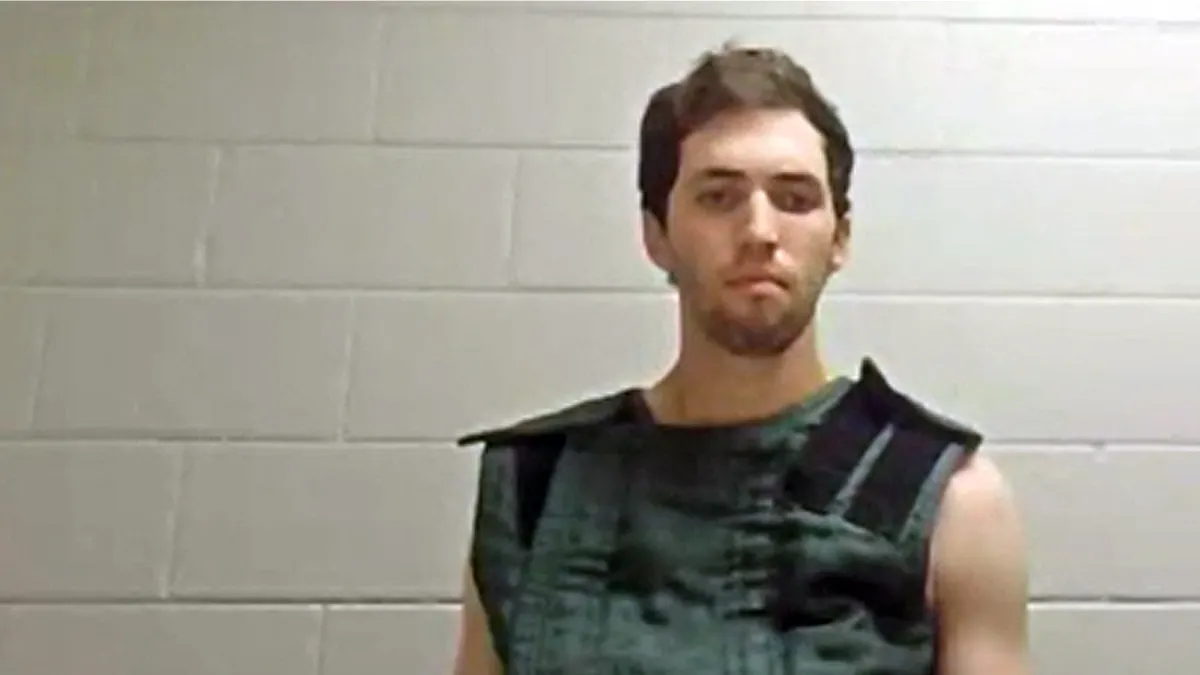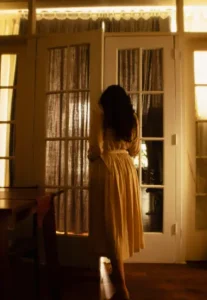A defense request made in the ongoing murder case of Tyler Robinson — the 22-year-old accused of assassinating conservative activist Charlie Kirk — has sparked widespread debate over courtroom fairness and the optics of justice in high-profile trials.
Robinson, who is charged with aggravated murder and multiple related offenses, recently won a small but symbolically important legal victory when a Utah judge ruled that he would be allowed to wear civilian clothes during court appearances. The decision, while procedural on the surface, touches on deep questions about due process, juror bias, and how justice is presented to the public in cases that attract global scrutiny.
A Shocking Crime and Swift Arrest
Tyler Robinson, 22, was arrested in September following an intense two-day nationwide manhunt after the fatal shooting of 31-year-old political commentator and activist Charlie Kirk. Kirk, a close ally of former President Donald Trump and founder of Turning Point USA, was speaking at Utah Valley University on September 10 when he was shot in the neck in broad daylight.
The killing sent shockwaves across the nation. Within hours, law enforcement agencies from multiple states joined the search for the suspect. Two days later, Robinson was apprehended and charged with aggravated murder, possession of a firearm during the commission of a felony, and several obstruction-of-justice counts.
Authorities have yet to determine a clear motive for the killing, but prosecutors allege that Robinson’s DNA was found at the scene. Investigators also released text messages between Robinson and his roommate, which they claim indicate premeditation. Utah County prosecutors have already stated their intention to seek the death penalty should Robinson be convicted.
Since his arrest, Robinson has been held without bail in a special housing unit at the Utah County Jail. His first court appearance on September 16 drew widespread attention after he was seen wearing a thick, padded anti-suicide vest — a detail that immediately became the focus of viral commentary online.
The Courtroom Appearance Debate
As preparations for Robinson’s trial continue, his defense team filed a motion requesting that he be permitted to wear civilian clothing and have his shackles removed for future appearances before the court. The filing, directed to District Judge Tony Graf, argued that forcing Robinson to appear in prison garb could irreparably damage his right to a fair trial.
The defense wrote:
“In the face of worldwide scrutiny, permitting Mr. Robinson to wear civilian clothing for court appearances is a minor inconvenience compared to the already present concerns with securing a fair trial before an impartial jury.”
The motion emphasized that jurors’ perceptions could be influenced by Robinson’s physical appearance in court, particularly if he appeared restrained or in jail-issued clothing. The filing warned that this could “inevitably lead to prosecutive juror perception that he is guilty and deserving of death.”
During a hearing on October 27, Judge Graf agreed to allow Robinson to wear civilian clothes, ruling that his right to the presumption of innocence outweighed the inconvenience of arranging non-prison attire. However, Graf also determined that Robinson would remain restrained during proceedings — though with the “least restrictive” form of restraint possible.
In his decision, Judge Graf stated:
“The safety of Mr. Robinson, the attorneys, court staff, and the public must remain the court’s highest priority. The emotional nature of these proceedings also raises the risk of disruption. Given these factors, the defendant’s request to appear without restraints is denied.”
He added that the presumption of innocence “remains intact,” even in such a high-profile and emotionally charged case.
The Legal and Psychological Significance
While the ruling might appear procedural, legal experts suggest it carries substantial weight in ensuring Robinson’s constitutional right to a fair trial.
Attorney at law Jeffrey S. Stephens explained that the decision reflects a core principle of criminal justice — that defendants must be seen as innocent until proven guilty.
“Defense counsel always prefer that their clients wear street clothes rather than prison attire so a jury is not predisposed to thinking of them as criminals,” Stephens said.
He described the dynamic as “ironic,” noting that defendants, by definition, have been charged with a crime — yet the justice system must still safeguard their presumption of innocence until the prosecution proves guilt beyond a reasonable doubt.
Stephens went on to explain that courtroom presentation plays a subtle but critical role in jury psychology. Visual cues such as handcuffs, shackles, or prison uniforms can subconsciously influence jurors to associate a defendant with guilt or danger before evidence is even presented.
“Different judges hold different views,” Stephens said. “In many instances, they want it made clear that the defendant in a serious case is not out on bail, but is currently incarcerated pending the outcome of the trial, and therefore is required to wear prison attire.
More liberal jurists, however, allow defendants to wear street clothes to avoid potential prejudice.”
A Precedent in High-Profile Trials
Robinson’s defense team cited several recent examples of defendants in major U.S. criminal cases being permitted to wear civilian clothing, including Bryan Kohberger, who was convicted of multiple murders in Idaho and allowed to appear in formal attire throughout his trial.
Such decisions, legal scholars say, are meant to reinforce the idea that even the most reviled or publicly condemned suspects are entitled to the full protection of due process — an essential component of the American legal system.
But in practice, these rulings can be controversial. Critics argue that allowing accused killers or violent offenders to appear in suits or casual clothing risks sanitizing the severity of their alleged crimes. Supporters counter that visual neutrality is crucial to maintaining the integrity of the trial process.
Balancing Safety and Fairness
Judge Graf’s decision reflects the delicate balance courts must strike between security and fairness. High-profile murder trials, particularly those involving political or ideological figures, often attract intense public attention, protests, and online speculation.
In this context, ensuring both safety and impartiality becomes a logistical and ethical challenge. The Utah State Courts confirmed that Robinson remains under close supervision in a special housing unit due to the notoriety of the case and concerns for his safety.
Even as he is allowed to wear civilian clothes, Robinson will still appear under visible restraint — likely handcuffs or ankle shackles — to mitigate security risks. The court noted that this hybrid approach allows for some degree of normalcy without compromising safety standards.
A Case Under Global Scrutiny
The assassination of Charlie Kirk has not only captivated national headlines but also reignited debates about political violence, extremism, and the boundaries of free speech. As a polarizing figure and vocal supporter of former President Trump, Kirk’s death has generated waves of reaction across the political spectrum.
Conservative commentators have called for swift justice, framing the killing as an attack on political expression. Critics of Kirk’s ideology, meanwhile, have urged restraint, warning against politicizing a tragedy before the facts are fully known.
In the digital age, where social media amplifies every courtroom moment, even small procedural rulings can take on symbolic meaning. For many observers, Judge Graf’s ruling on civilian attire is not just about clothing — it’s about how justice is perceived in an era where every visual detail becomes a viral headline.
What Comes Next
Robinson’s next in-person court appearance is scheduled for January 16, where pretrial motions and jury selection issues are expected to be discussed. Prosecutors are anticipated to outline their death penalty arguments in the months leading up to the trial.
If convicted of aggravated murder, Robinson could face the death penalty — a punishment still permitted under Utah law, though rarely applied in recent years.
Legal experts anticipate a lengthy and complex trial, given the national implications and the potential political overtones of the case. Analysts expect both sides to mount exhaustive arguments over evidence, motive, and the credibility of witnesses.
For now, Robinson’s legal victory over his courtroom appearance represents one of the few moments of success for his defense team amid a case defined by overwhelming public attention and the looming threat of capital punishment.
The Broader Implications
Beyond the specifics of this case, the controversy highlights the psychological nuances of courtroom presentation — and how easily perception can influence justice. In high-profile cases, where jurors are often aware of media narratives before entering the courtroom, even the smallest visual cues can shape their assumptions.
Stephens summed it up succinctly:
“The right to a fair trial doesn’t just mean what happens in the evidence and testimony. It also means ensuring the jury sees the defendant as a human being — not a headline.”
As the case proceeds, that human element may prove crucial. Whether Tyler Robinson is ultimately found guilty or acquitted, the court’s efforts to maintain fairness and dignity within an emotionally charged environment will likely remain a focal point of legal and public debate.
For now, the world watches closely — not just for the verdict, but for what this trial reveals about justice, perception, and the delicate balance between security and fairness in America’s most scrutinized courtrooms.

Emily Johnson is a critically acclaimed essayist and novelist known for her thought-provoking works centered on feminism, women’s rights, and modern relationships. Born and raised in Portland, Oregon, Emily grew up with a deep love of books, often spending her afternoons at her local library. She went on to study literature and gender studies at UCLA, where she became deeply involved in activism and began publishing essays in campus journals. Her debut essay collection, Voices Unbound, struck a chord with readers nationwide for its fearless exploration of gender dynamics, identity, and the challenges faced by women in contemporary society. Emily later transitioned into fiction, writing novels that balance compelling storytelling with social commentary. Her protagonists are often strong, multidimensional women navigating love, ambition, and the struggles of everyday life, making her a favorite among readers who crave authentic, relatable narratives. Critics praise her ability to merge personal intimacy with universal themes. Off the page, Emily is an advocate for women in publishing, leading workshops that encourage young female writers to embrace their voices. She lives in Seattle with her partner and two rescue cats, where she continues to write, teach, and inspire a new generation of storytellers.









